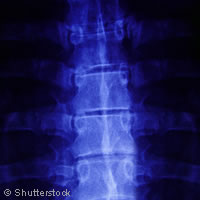Study reveals new role of major regulatory genes in spine development
A set of genes that controls many aspects of embryonic development is also involved in determining the number of vertebrae in the spine, according to new EU-funded research published in the journal Developmental Cell. EU support for the study came from the CELLS INTO ORGANS ('Cells into organs: functional genomics for development and disease of mesodermal organ systems') project, which finished earlier this year and received EUR 7.2 million from the 'Life sciences, genomics and biotechnology for health' Thematic area of the Sixth Framework Programme (FP6). Hox genes are found throughout the animal kingdom; these regulatory genes play an important role throughout development, ensuring that our limbs grow in the right places, for example. In this study, scientists from France, the Netherlands, Portugal and the UK investigated the role of Hox genes in the development of the spine. Vertebrae grow from precursor cells called somites, which are formed in the embryo. During development, the spine grows vertebra by vertebra, starting at the head and ending at the tail. It is already known that the Hox genes help to ensure that the right kind of vertebrae grow in the right place - cervical vertebrae grow in the neck region, while in the chest region the vertebrae are linked with the ribs, followed by lumbar vertebrae in the lower back and so on down to the tail. However, the number of vertebrae is also important; this varies from animal to animal. Snakes, perhaps unsurprisingly, have the most, while smaller animals, such as mice, have fewer. The number of vertebrae formed is linked to the growth of the embryo at its tail end. The more it grows, the more somites it makes, and so the more vertebrae it eventually has. A family of regulatory genes, called Cdx, is known to be involved setting the number of vertebrae. When the Cdx genes are switched off, some Hox genes are also rendered inactive, but until now this was thought to be part of the Hox mechanism that controls vertebrate identity. Normally, switching the Cdx genes off causes the growth of the embryo at the tail end to come to a halt. However, this new research shows that the Hox genes are able to take over and restore growth and ensure that the correct number of somites (and thus vertebrae) is produced. 'We now show that the activation of Hox genes is also part of how Cdx genes promote growth of the embryo at its tail end,' explained Moises Mallo of the Instituto Gulbenkian de Ciência in Portugal. 'When the relevant Hox genes were activated in the Cdx mouse mutants [i.e. mice lacking the Cdx genes], the embryos recovered and were born with a quite normal vertebral column, proving that the Hox genes were able to compensate for the lack of Cdx. This is a novel role for Hox genes.' However, while the Hox genes promote vertebral growth early on in development, they are also vital in stopping the addition of too many vertebrae later on in embryonic development. If the Hox genes that are usually active at the end of spinal development are activated too early, the growth of new spinal segments is interrupted, resulting in a shorter spine than usual. 'This paper provides an important addition to a long-standing view on the role of the Hox genes - one of the most-studied genes involved in embryonic development: that it controls not only identity, but also number of vertebrae,' Dr Mallo added. 'Although these observations were made in the tail-end region of the embryo, it is very likely that similar mechanisms might be acting to determine the number of segments closer to the head.'
Countries
France, Netherlands, Portugal, United Kingdom



